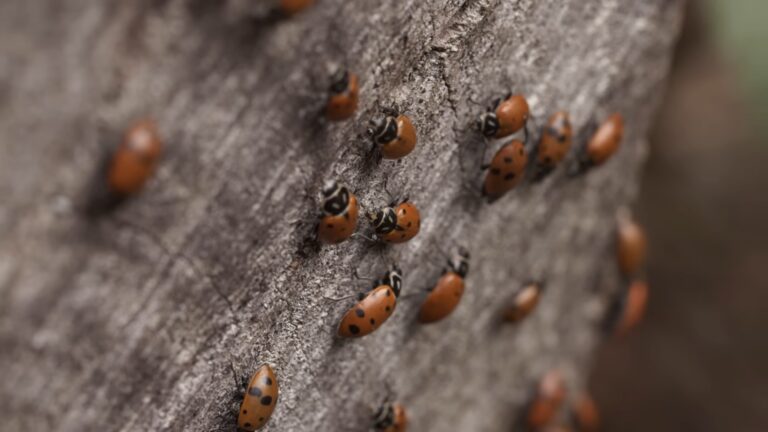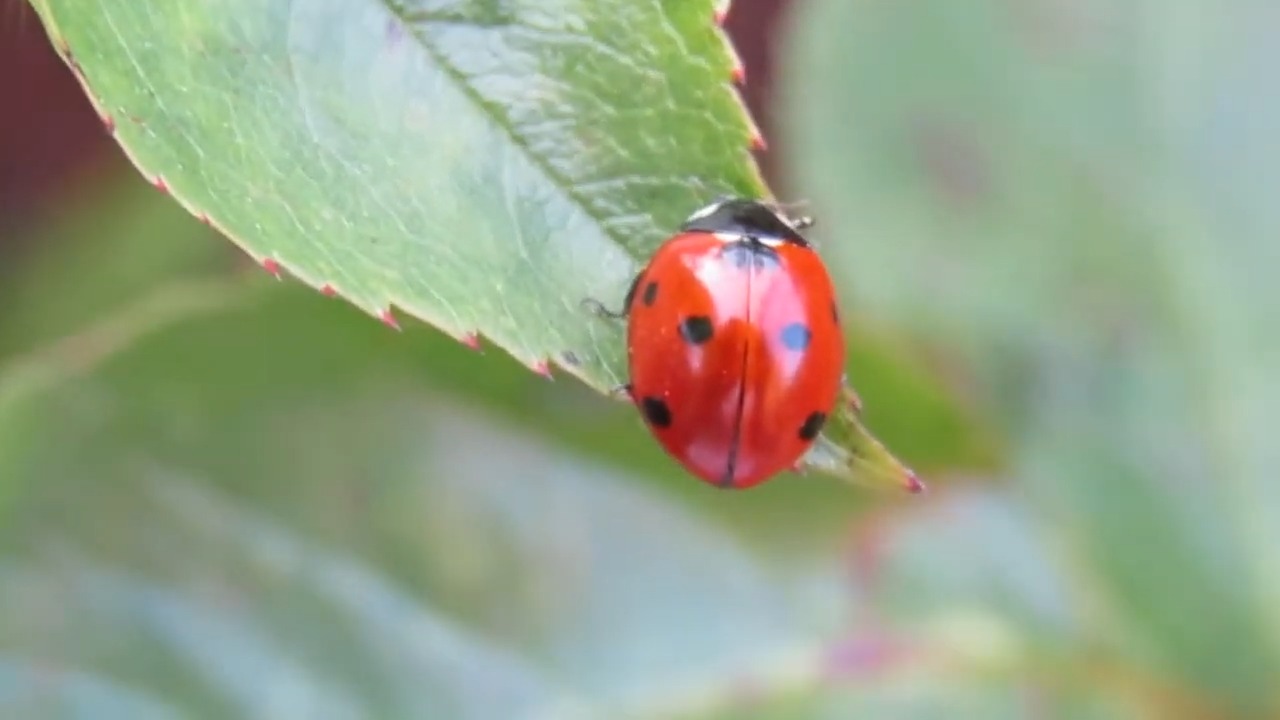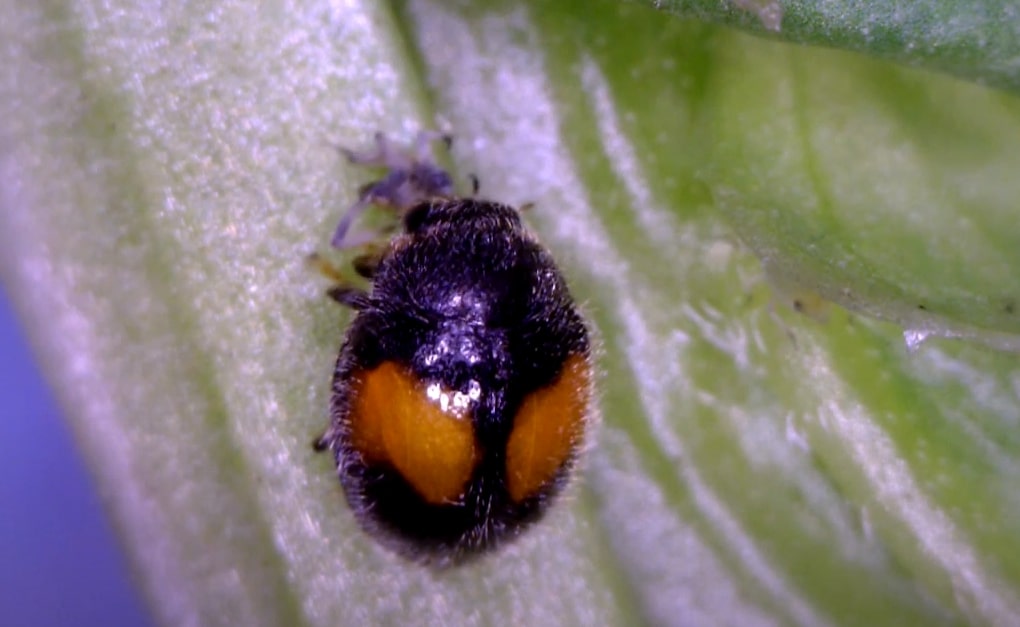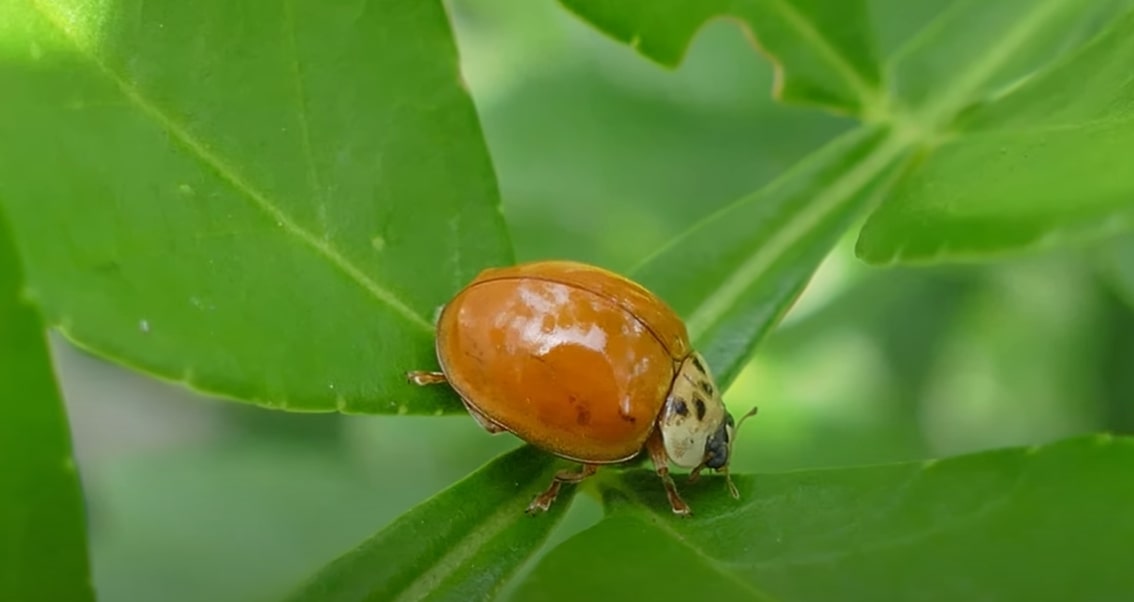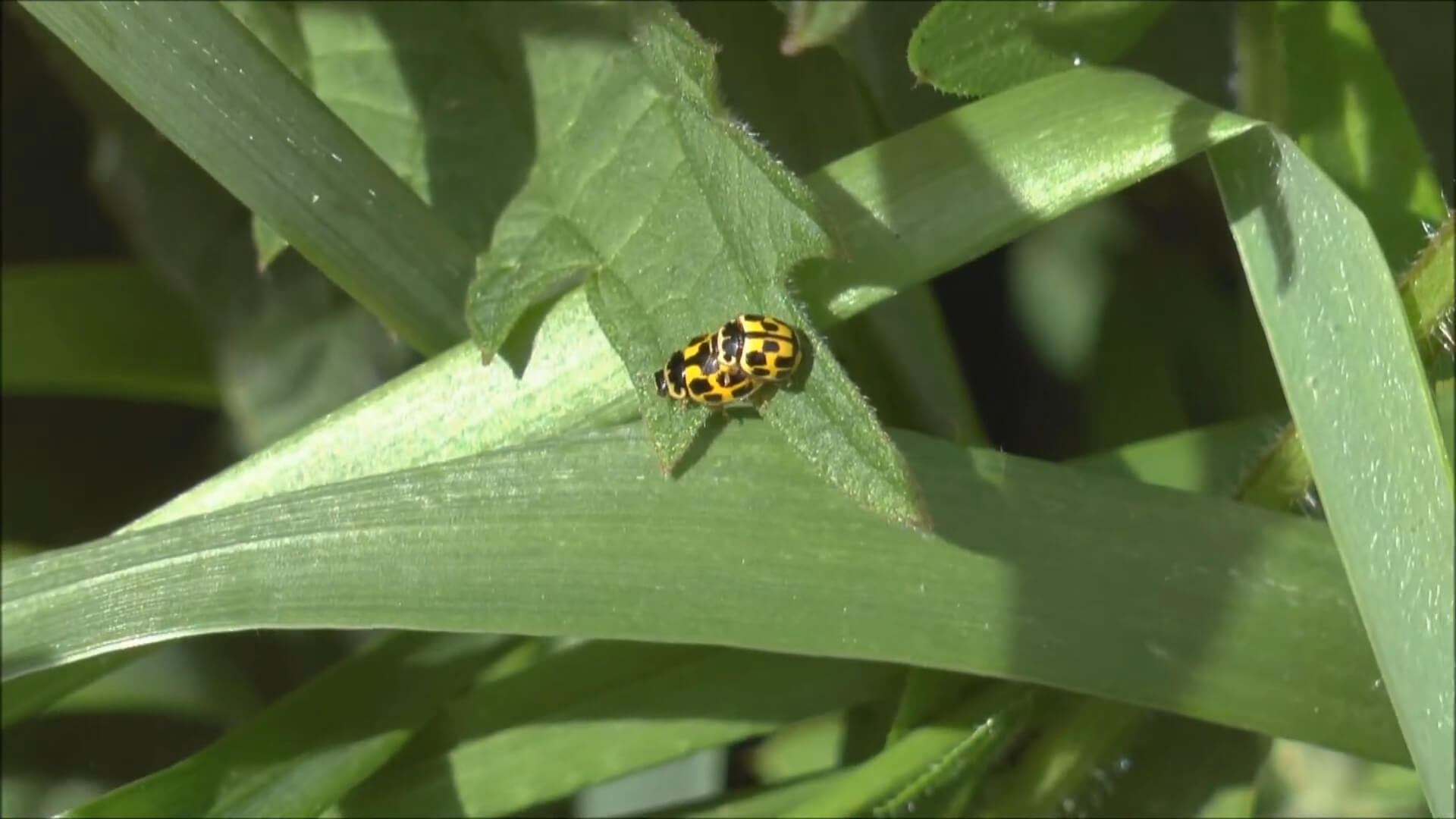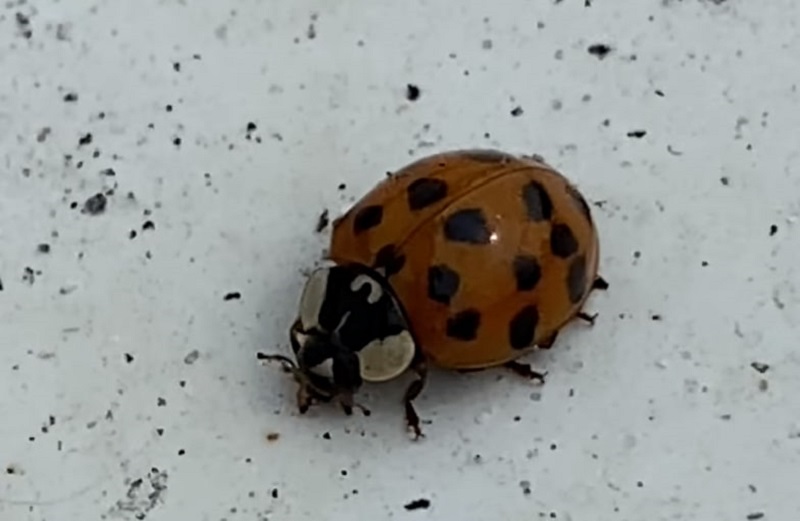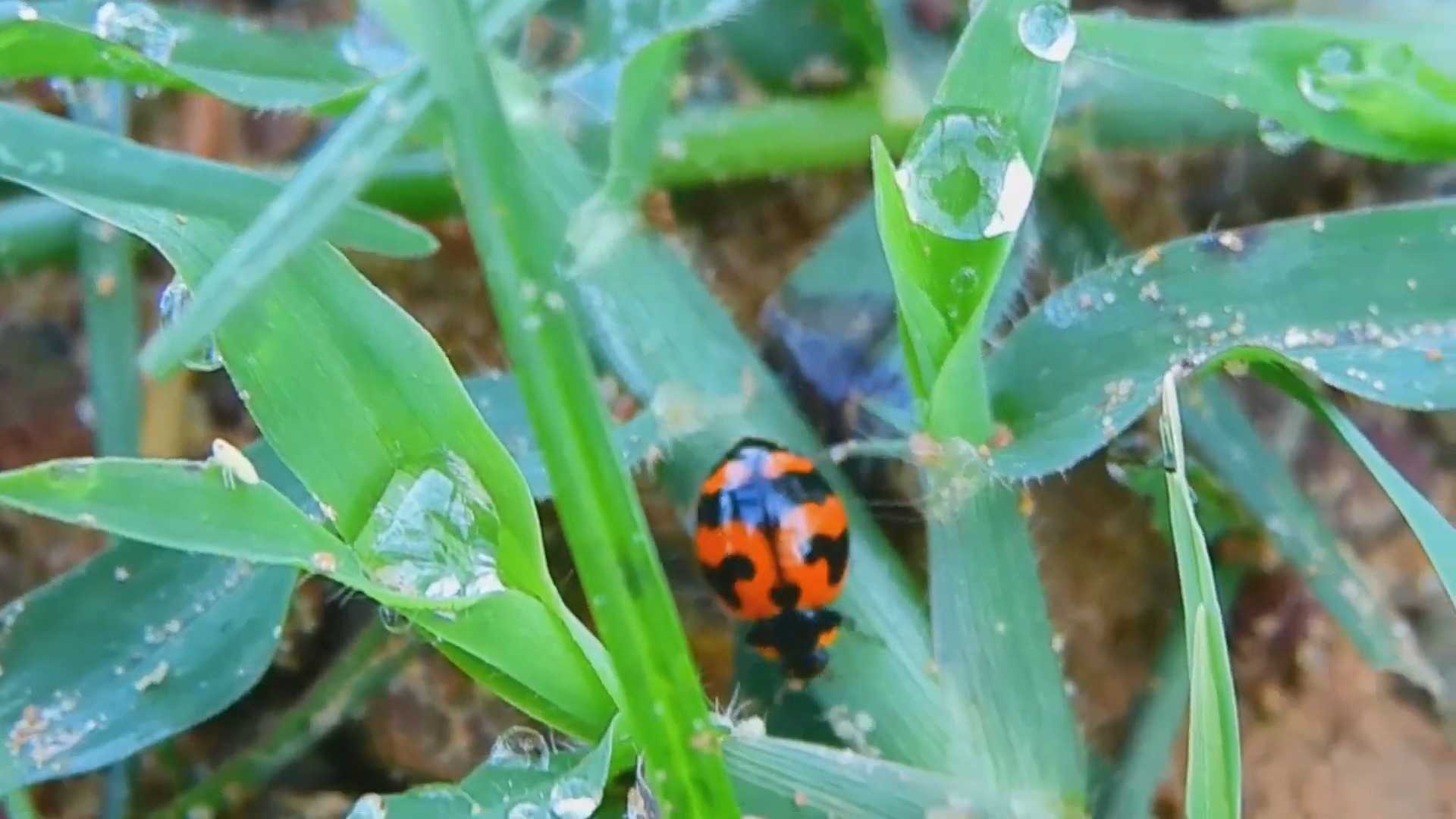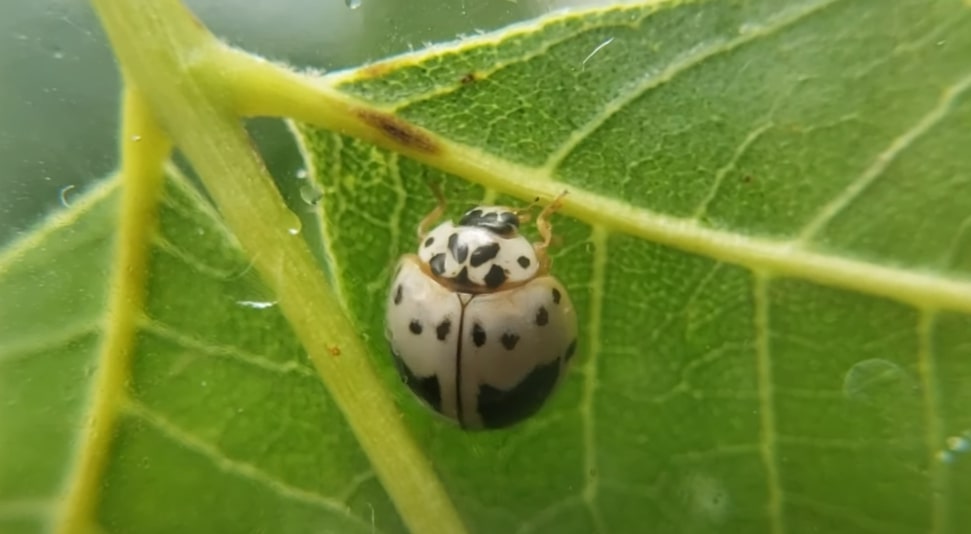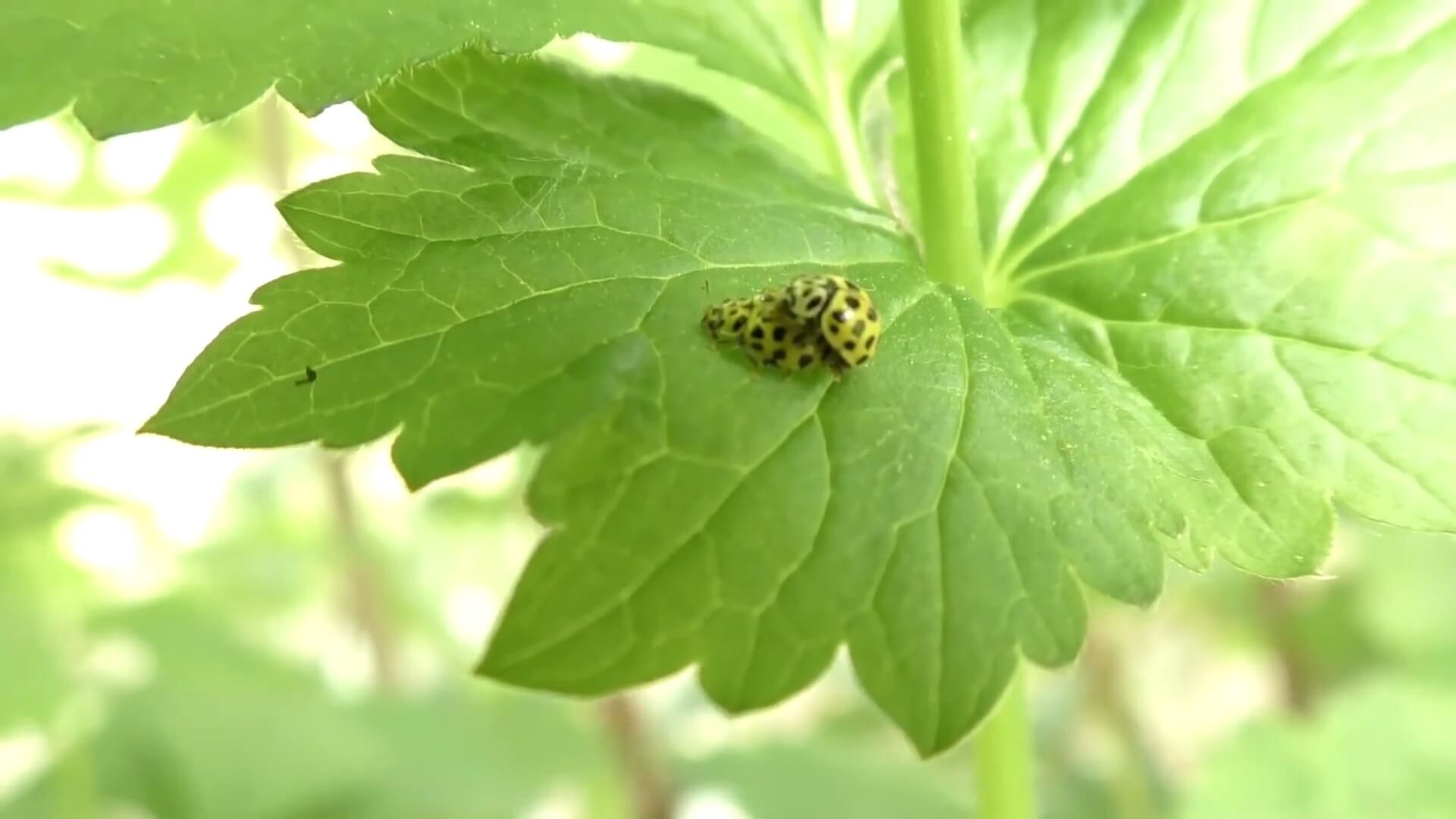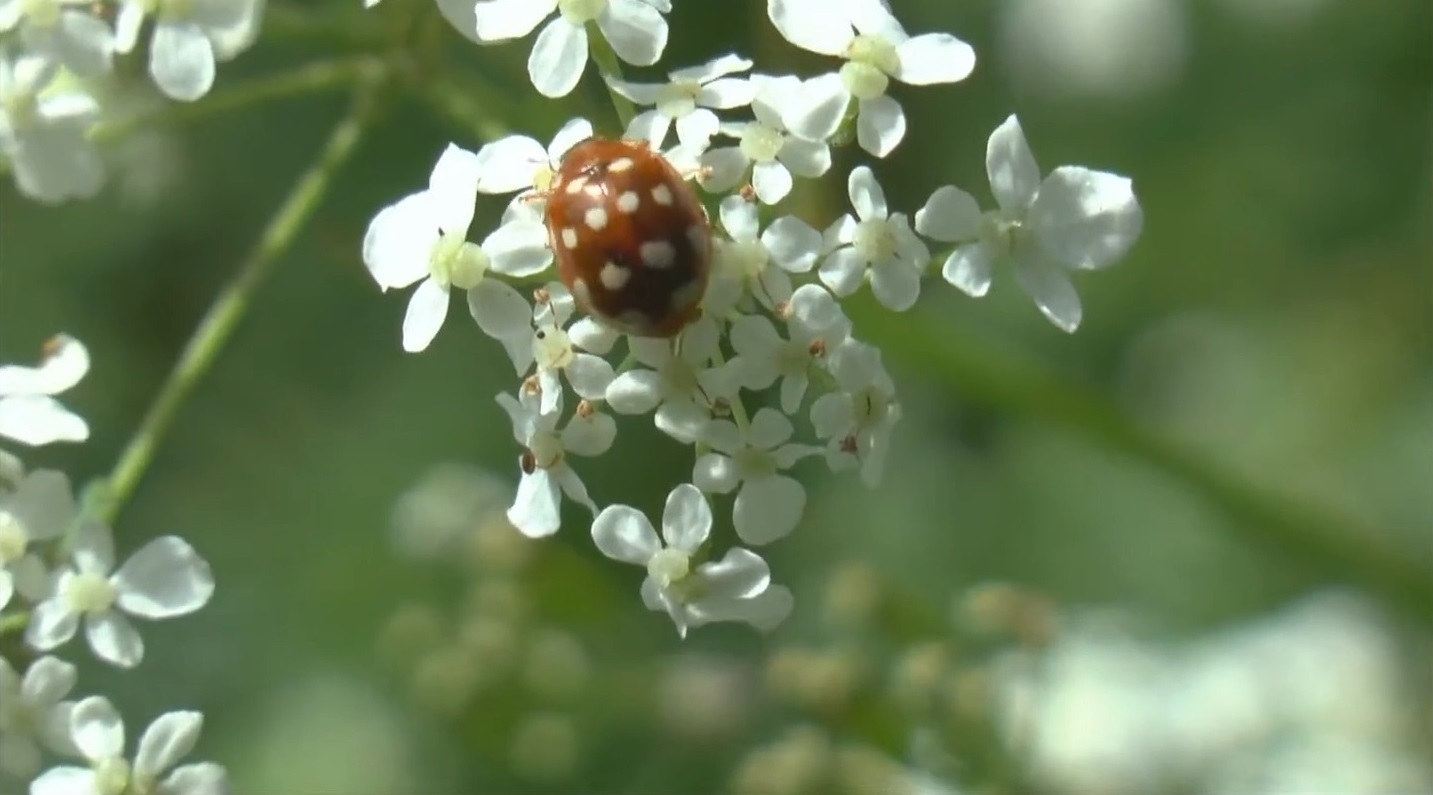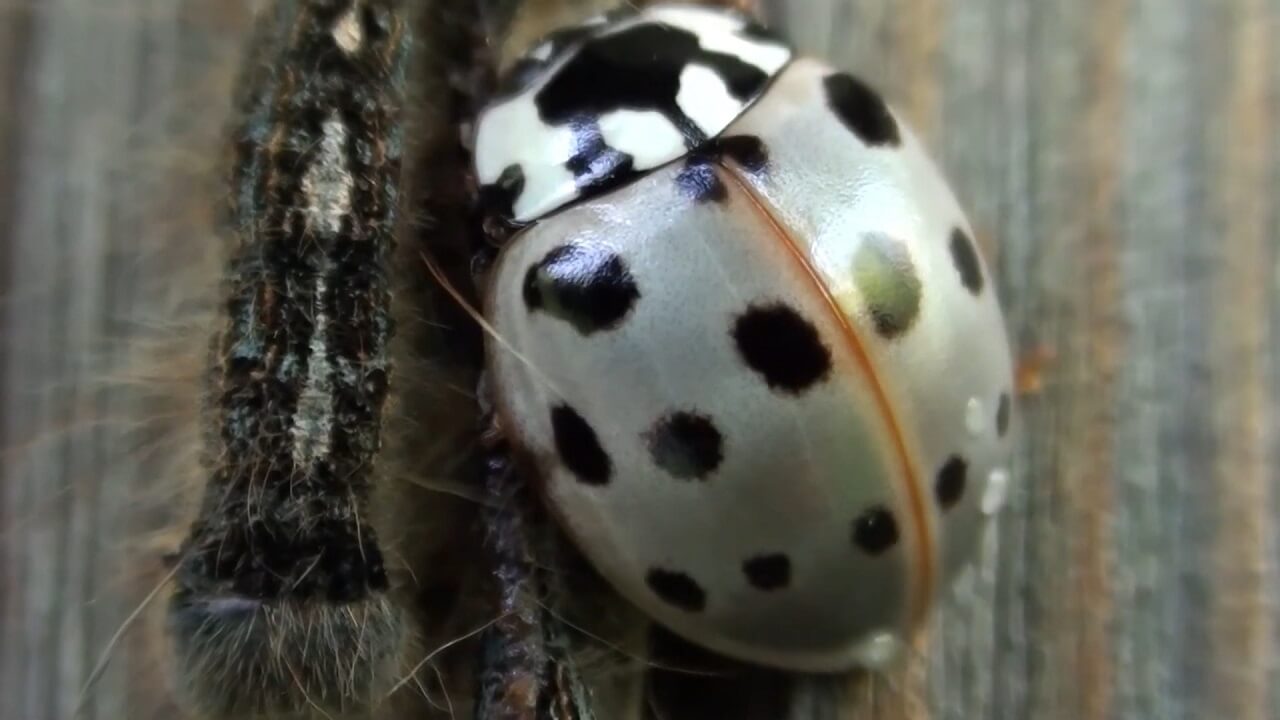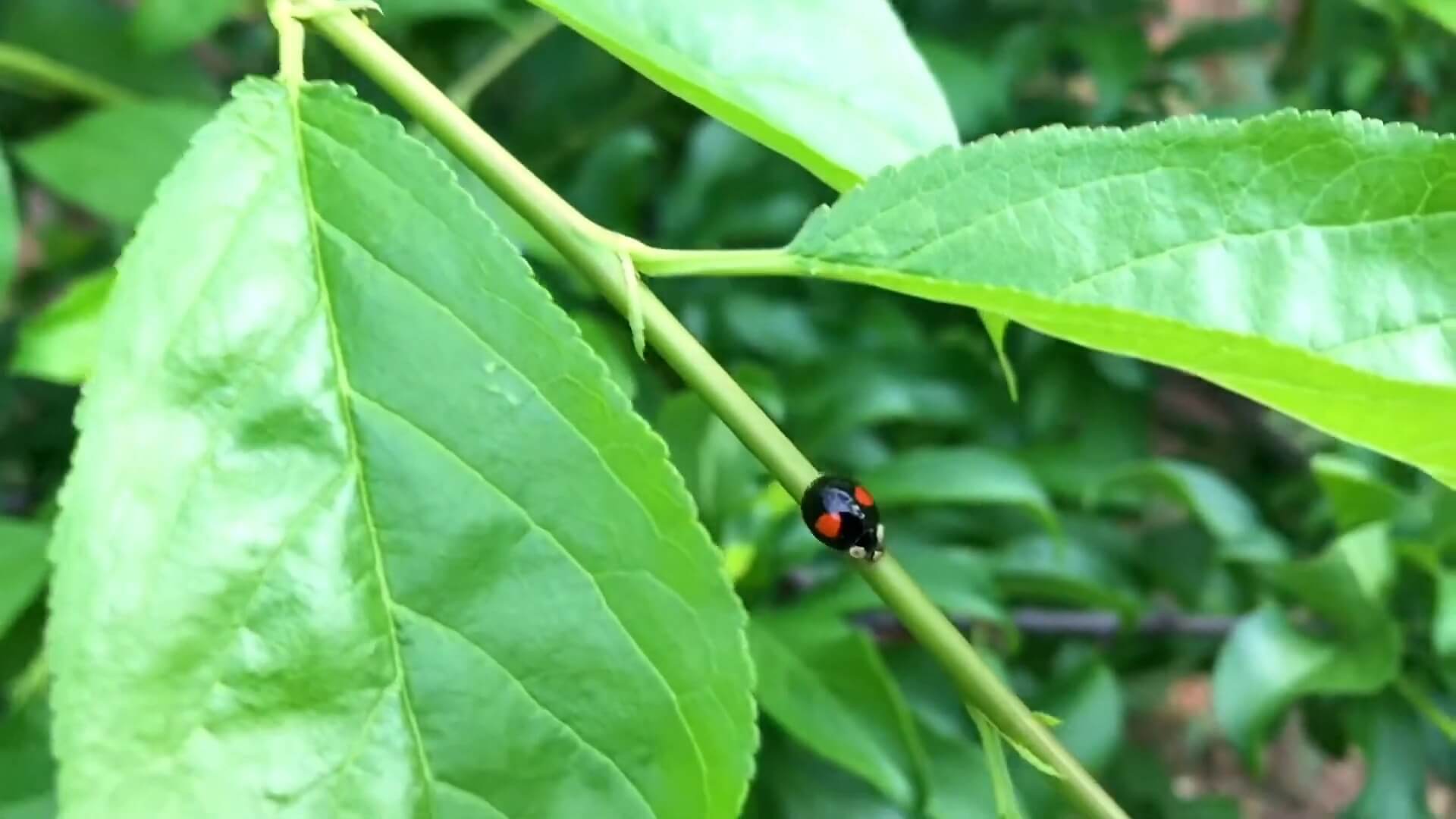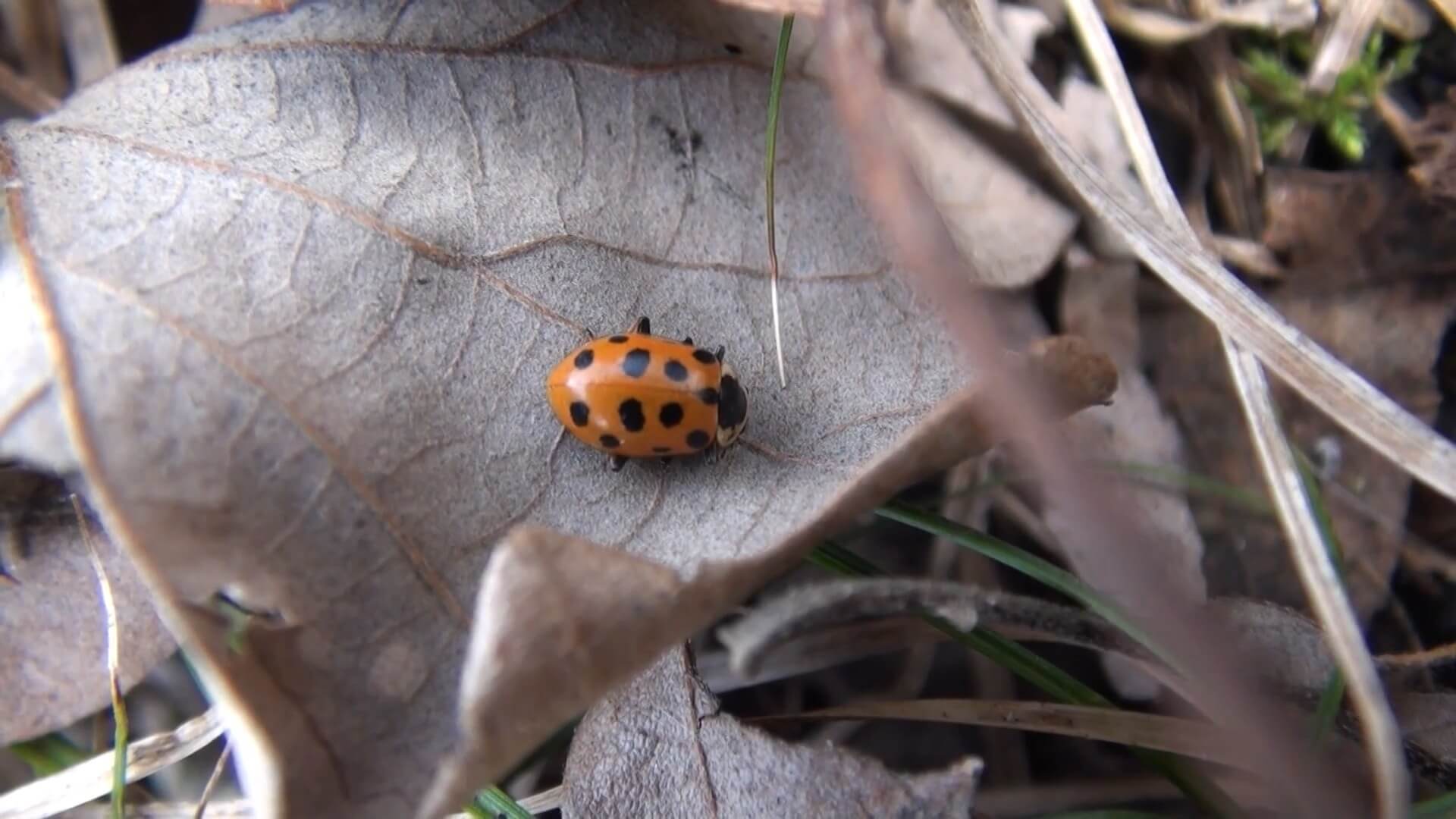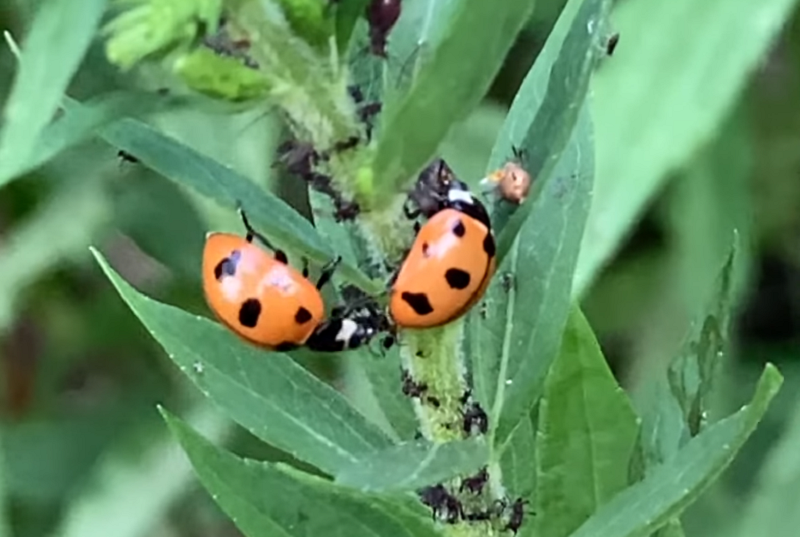Ladybugs. Who doesn’t love those cute little beetles with their charming spots? They might look like simple garden friends, but there’s a whole lot more to them than meets the eye.
Let’s chat about 18 types of ladybugs that you should know about. Each one has its own unique quirks and features, so pay attention, and let’s begin!
Table of Contents
Toggle1. Seven-Spotted Ladybug
The seven-spotted ladybug is probably the one that pops into your head when you think of ladybugs. This classic beetle has a red body with three spots on each wing and one in the middle.
It’s like the poster child for ladybugs everywhere. Originating from Europe, it’s been introduced to North America to help with pest control. These little guys love munching on aphids, making them a gardener’s best friend.
| Color | Red with black spots |
| Number of Spots | Seven |
| Size | Medium |
| Native Region | Europe, introduced to North America |
2. Two-Spotted Ladybug
Meet the minimalist of the ladybug world, the two-spotted ladybug. It sports a bright red body with just two black spots, one on each wing cover. This species is common in North America and Europe.
It’s not just a pretty face either; it’s known for its voracious appetite for aphids and other plant pests. Sadly, its numbers have been dwindling due to competition with invasive species.
| Color | Red with black spots |
| Number of Spots | Two |
| Size | Small to medium |
| Native Region | North America, Europe |
3. Asian Lady Beetle
The Asian lady beetle might seem friendly, but it’s a bit of a troublemaker. Often mistaken for native species, it comes in various colors from red to orange, with or without spots.
Introduced to control pests, it’s now considered invasive in many
areas. These beetles can be a nuisance when they invade homes in large numbers seeking shelter from the cold.
| Color | Red, orange, yellow |
| Number of Spots | Varies, can have none |
| Size | Medium |
| Native Region | Asia |
4. Fourteen-Spotted Ladybug
If you’re into patterns, the fourteen-spotted ladybug will catch your eye. Unlike its red counterparts, it’s usually yellow or white with black spots that can fuse into stripes.
Found in Europe and parts of North America, this species prefers dining on mildew and small insects. Its unique look makes it a fascinating find.
| Color | Yellow or white with black spots |
| Number of Spots | Fourteen |
| Size | Small |
| Native Region | Europe, North America |
5. Convergent Lady Beetle
The convergent lady beetle is a true aphid annihilator. Recognizable by its orange-red color and distinctive converging white lines on the pronotum, it’s native to North America.
This species is often used in biological control programs because of its efficiency in reducing aphid populations. If you see a swarm of them, they’re probably on a pest control mission.
| Color | Orange-red with white lines and black spots |
| Number of Spots | Varies |
| Size | Medium |
| Native Region | North America |
6. Pink-Spotted Ladybug
The pink-spotted ladybug brings a bit of pastel charm to the beetle world. It has a pinkish or yellowish body with black spots, making it quite different from the typical red ladybug.
Found in North America, it’s another avid consumer of aphids and other soft-bodied insects. Its delicate color makes it a delightful surprise in the garden.
| Color | Pink or yellow with black spots |
| Number of Spots | Varies |
| Size | Medium |
| Native Region | North America |
7. Twenty-Spotted Ladybug
Now, here’s a ladybug that’s not into the whole red-and-black look. The twenty-spotted ladybug has a tan or light brown body with an array of black spots, often forming two rows on each wing cover.
Found across North America, it primarily feeds on mildew rather than insects, adding some variety to the ladybug diet spectrum.
| Color | Tan or light brown with black spots |
| Number of Spots | Twenty |
| Size | Small |
| Native Region | North America |
8. Eye-Spotted Ladybug
The eye-spotted ladybug brings some visual flair with its unique markings. Sporting a red or orange body, it has large black spots with pale rings, resembling eyes.
This species is native to North America and prefers habitats with plenty of aphids. Its distinct appearance makes it a fun find for bug enthusiasts.
| Color | Red or orange with black “eye” spots |
| Number of Spots | Usually eight |
| Size | Medium |
| Native Region | North America |
9. Three-Banded Ladybug
Simplicity at its best, the three-banded ladybug has a unique pattern of three black bands across its red or orange wing covers. It’s commonly found in Europe and North America.
This species is another valuable ally in controlling aphid populations, making it a favorite among gardeners.
| Color | Red or orange with black bands |
| Number of Bands | Three |
| Size | Medium |
| Native Region | Europe, North America |
10. Ashy Gray Lady Beetle
The ashy gray lady beetle stands out with its dull, grayish-white color and small black spots. Found mainly in the western United States, it thrives in dry habitats.
Despite its less vibrant appearance, it’s just as effective at pest control as its more colorful cousins.
| Color | Grayish-white with black spots |
| Number of Spots | Varies |
| Size | Medium |
| Native Region | Western United States |
11. Twenty-Two-Spotted Ladybug
Imagine a ladybug that’s gone dot-crazy. The twenty-two-spotted ladybug is bright yellow with, you guessed it, twenty-two black spots.
Native to Europe, it’s also found in North America. This small species primarily feeds on mildew, making it a useful ally in keeping certain plant diseases at bay.
| Color | Yellow with black spots |
| Number of Spots | Twenty-two |
| Size | Small |
| Native Region | Europe, North America |
12. Cream-Spotted Ladybug
The cream-spotted ladybug sports a reddish-orange body with large, creamy white spots. Found across Europe and parts of North America, it’s a voracious predator of aphids.
Its striking coloration makes it easy to spot, even among dense foliage.
| Color | Reddish-orange with white spots |
| Number of Spots | Varies |
| Size | Medium |
| Native Region | Europe, North America |
13. Polished Lady Beetle
The polished lady beetle is a sleek, shiny red beetle with no spots. Native to North America, it’s often found in woodlands and gardens.
This species is a diligent hunter of aphids and other plant pests, making it a valuable garden ally despite its less colorful appearance.
| Color | Shiny red with no spots |
| Number of Spots | None |
| Size | Medium |
| Native Region | North America |
14. Fifteen-Spotted Ladybug
The fifteen-spotted ladybug might be mistaken for the common seven-spotted one, but look closer. It has a unique white body with black spots, giving it an almost inverted appearance compared to the traditional red and black ladybugs.
Found in North America, it’s known for its effectiveness in controlling aphid populations. This beetle’s striking contrast makes it an interesting addition to any bug collection.
| Color | White with black spots |
| Number of Spots | Fifteen |
| Size | Medium |
| Native Region | North America |
15. Twice-Stabbed Ladybug
With a name as dramatic as its appearance, the twice-stabbed ladybug is a standout. It has a shiny black body with two bright red spots, resembling tiny stab wounds.
Found in North America, particularly in the southeastern regions, it’s another avid consumer of aphids and scale insects. Its unique coloration makes it easily recognizable and a fascinating sight in gardens.
| Color | Black with red spots |
| Number of Spots | Two |
| Size | Small |
| Native Region | North America |
16. Variegated Ladybug
The variegated ladybug adds some variety to the mix with its multiple color forms. It can range from yellow to orange, while the number of black spots can vary, sometimes forming intricate patterns.
Found in different parts of the world, including North America and Europe, this species is highly adaptable and can thrive in diverse environments. Its varying appearance makes it a fun find for ladybug enthusiasts.
| Color | Yellow to orange with black spots |
| Number of Spots | Varies |
| Size | Medium |
| Native Region | Worldwide |
17. Thirteen-Spotted Ladybug
The thirteen-spotted ladybug keeps it simple yet striking with its red body and thirteen black spots. Commonly found in North America, it’s a reliable predator of aphids and other small insects.
This species’ straightforward appearance and beneficial habits make it a favorite among gardeners and farmers alike.
| Color | Red with black spots |
| Number of Spots | Thirteen |
| Size | Medium |
| Native Region | North America |
18. Nine-Spotted Ladybug
Last but definitely not least, the nine-spotted ladybug has an endearing appearance with its red body and nine black spots. Once common in North America, its population has declined due to competition with invasive species like the Asian lady beetle.
Efforts are being made to conserve and reintroduce this native species. Its historical significance and charming look make it a symbol of biodiversity and conservation efforts.
| Color | Light Red / Yellow with black spots |
| Number of Spots | Nine |
| Size | Medium |
| Native Region | North America |
Final Thoughts
So, there you have it—18 types of ladybugs that bring more to the table than just their cute spots. Each has its own role in the ecosystem, from pest control to being a sign of healthy biodiversity.
Next time you spot one, take a closer look and appreciate the tiny details that make each species unique. Ladybugs aren’t just garden ornaments; they’re vital players in keeping our gardens and farms thriving. Plus, they’re just plain fun to watch!
Related Posts:
- 7 OSHA Standards Every Industrial Company Should Know
- Shopify vs. Other E-commerce Platforms - Which Is…
- How Early Should You Get to the Airport? 7 Tips for…
- 5 Most Common Lizards Found in Florida - All You…
- Buc-ee’s Hours and Menu Prices for 2024 - Everything…
- Dog Harness vs Collar - What Vets and Trainers Want…


